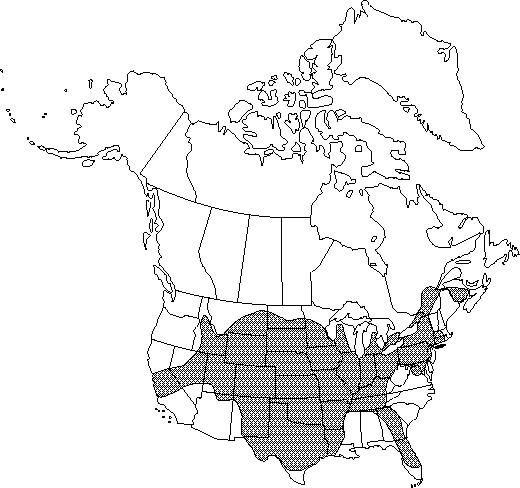Difference between revisions of "Ulmus pumila"
Sp. Pl. 1: 226. 1753.
FNA>Volume Importer |
FNA>Volume Importer |
||
| Line 62: | Line 62: | ||
|publication year=1753 | |publication year=1753 | ||
|special status=Weedy | |special status=Weedy | ||
| − | |source xml=https://jpend@bitbucket.org/aafc-mbb/fna-data-curation.git/src/ | + | |source xml=https://jpend@bitbucket.org/aafc-mbb/fna-data-curation.git/src/f6b125a955440c0872999024f038d74684f65921/coarse_grained_fna_xml/V3/V3_1102.xml |
|genus=Ulmus | |genus=Ulmus | ||
|species=Ulmus pumila | |species=Ulmus pumila | ||
Revision as of 19:51, 24 September 2019
Trees, 15 to 30 m; crowns open. Bark gray to brown, deeply furrowed with interlacing ridges. Wood brittle. Branches not winged; twigs gray-brown, pubescent. Buds dark brown, ovoid, glabrous; scales light brown, shiny, glabrous to slightly pubescent. Leaves: petiole 2-4 mm, glabrous. Leaf blade narrowly elliptic to lanceolate, 2-6.5 × 2-3.5 cm, base generally not oblique, margins singly serrate, apex acute; surfaces abaxially with some pubescence in axils of veins, adaxially glabrous; lateral veins forking to 3 times per side. Inflorescences tightly clustered fascicles, 6-15-flowered, 0.5 cm, flowers and fruits not pendulous, sessile. Flowers: calyx shallowly lobed, lobes 4-5, glabrous; stamens 4-8; anthers brownish red; stigmas green, lobes exserted. Samaras yellow-cream, orbiculate, 10-14 mm diam., broadly winged, glabrous, tip notched 1/3-1/2 its length. Seeds thickened, not inflated. 2n = 28.
Phenology: Flowering late winter–early spring.
Habitat: Commonly escaping from cultivation, waste places, roadsides, fencerows
Elevation: 0-2200 m
Distribution

N.B., Ont., Que., Ala., Ariz., Ark., Calif., Colo., Conn., D.C., Fla., Ga., Idaho, Ill., Ind., Iowa, Kans., Ky., La., Md., Mass., Mich., Minn., Mo., Mont., Nebr., Nev., N.J., N.Mex., N.Y., N.Dak., Ohio, Okla., Pa., S.Dak., Tenn., Tex., Utah, Va., Wis., Wyo., Asia.
Discussion
Ulmus pumila probably occurs in Vermont and West Virginia, but it has not been documented for those states.
Planted for quick-growing windbreaks, Ulmus pumila has weak wood, and its branches break easily in mature trees. It is easily distinguished from other North American elms by its singly serrate leaf margins. Ulmus pumila is similar to U. parvifolia Jacquin with its small, singly serrate leaves. Ulmus parvifolia, however, has smooth bark that sheds from tan to orange, and it flowers and sets fruit in the fall.
Selected References
None.